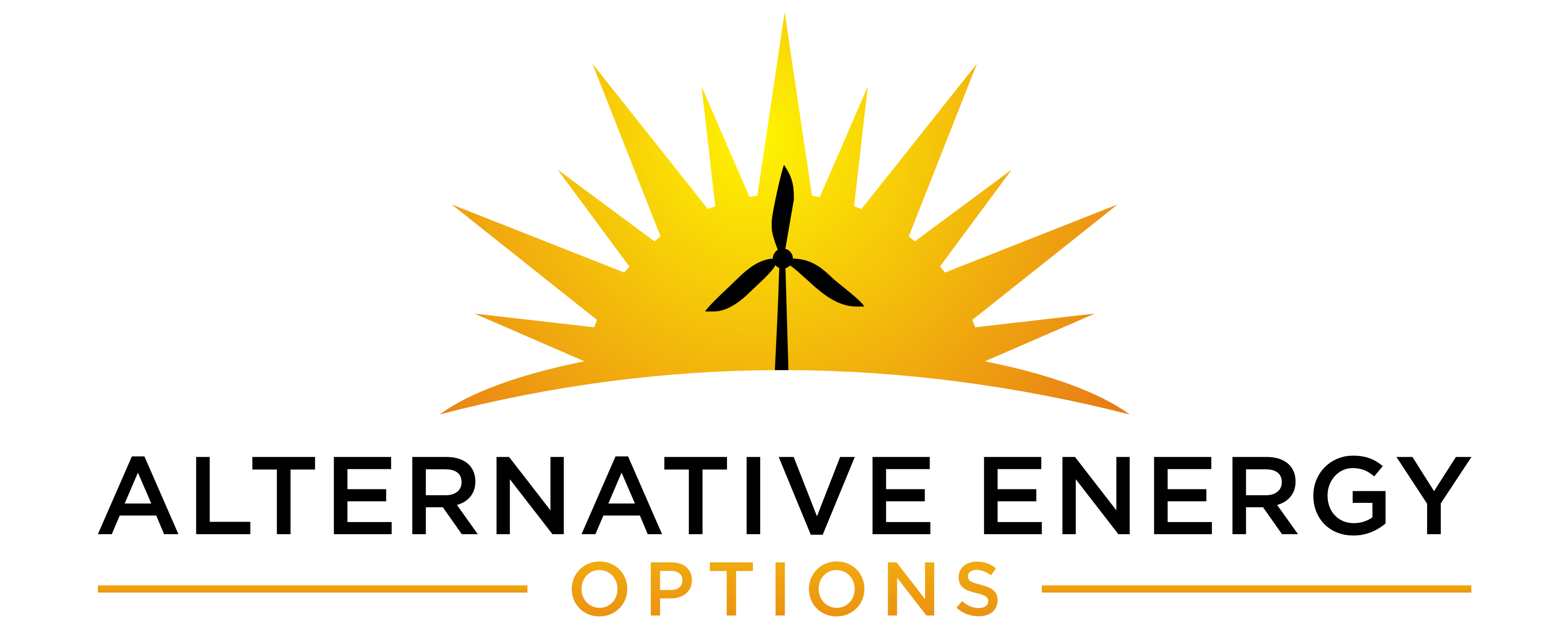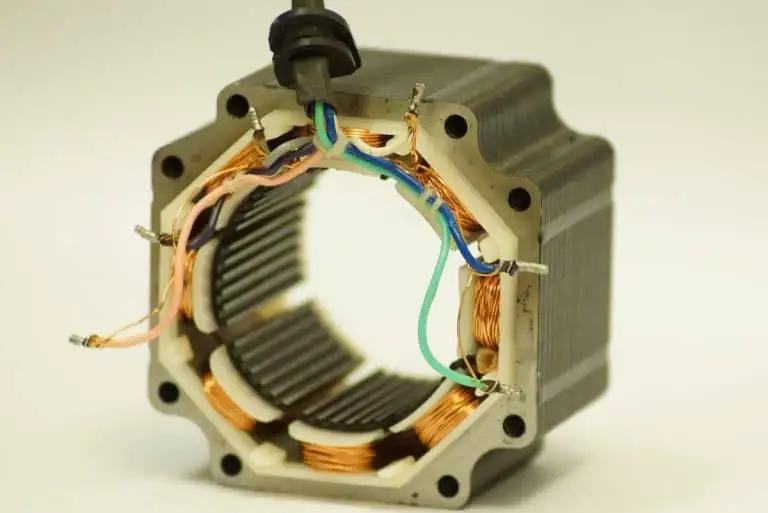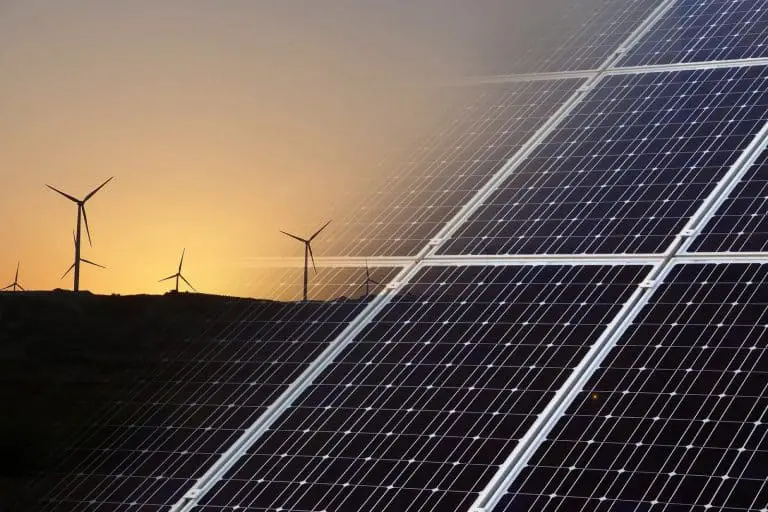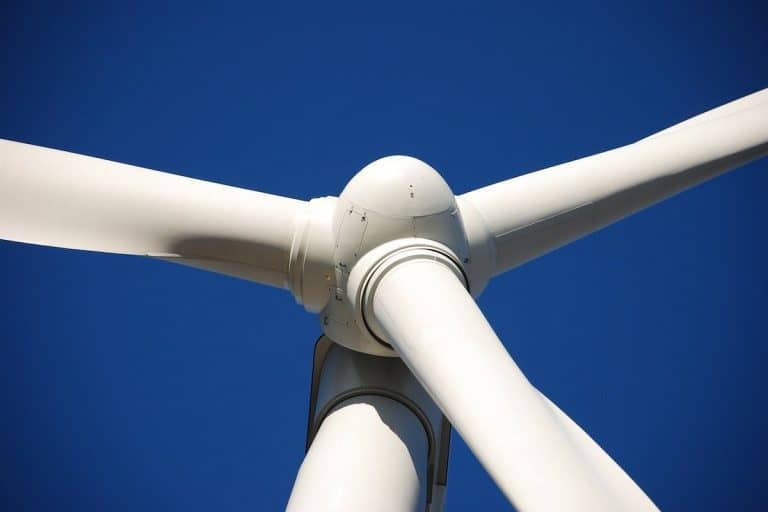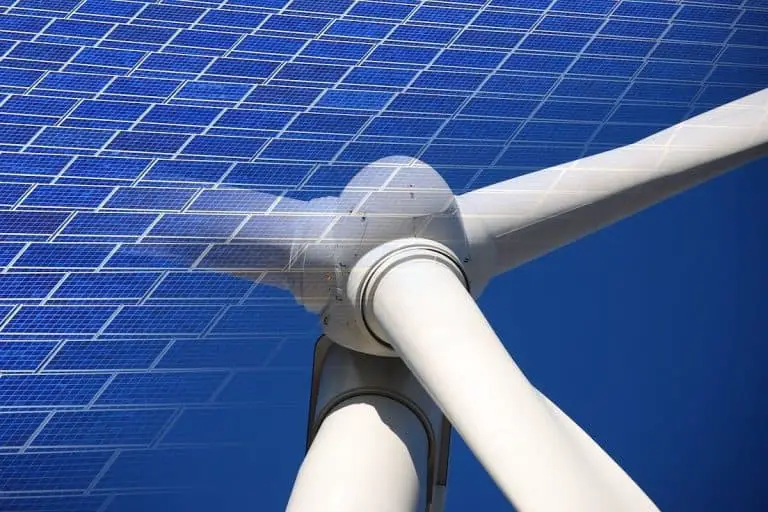Can Wind Turbines Spin Both Ways?
Wind turbine rotor blades can be engineered to spin both ways to produce electricity – clockwise or counterclockwise. Most turbines spin in a clockwise direction for reasons pertaining to convenience and a single global standard. However, the rotor spin direction may make a difference when two or more wind turbines are placed one behind the other.
Just as an aircraft’s wing provides lift via the air flowing under it, so too does a wind turbine’s rotor blade spin, driven by the flow of wind over its surface. But how do we convert wind energy into usable electricity, and does it really matter in which direction those huge rotor blades spin?
Carry on reading to find out how science and physics continue to surprise us about things we don’t usually give a thought to — things like how a modern horizontal-axis wind turbine (HAWT) converts potential energy (wind) into kinetic energy (electricity) and how this effect may be different in the northern and southern hemisphere.
What Happens if a Wind Turbine Spins Backwards?
The study of the way air moves over a solid surface is called aerodynamics. The shape of an aircraft’s wing, for example, creates a lifting force as the rushing air passes under and over it. Similarly, as wind encounters the wind turbine rotors’ contoured shape, the wind pushes the blades to move in a certain direction.
Throughout the world, this direction is usually clockwise. Why?
There is nothing in the realm of physics, the study of how matter behaves in space and time, which determines that a clockwise spin is any better or more efficient than an anticlockwise or counterclockwise spin. Either direction will produce a similar result in terms of electricity generation.
The Need for a Universal Standard
The fact that the majority of rotors spin in a clockwise direction is due mainly to the need for a universal standard.
The manufacturing process of rotor blades for wind turbines from today’s lightweight glass- or carbon fiber epoxy composite materials is very expensive. These blades can measure well over 260 feet (approximately 80 meters) in length. The longest blade in current manufacture is made by LM Wind Power in Denmark and measures 290 feet (88.4 meters) (source).
But, just as it has become accepted that the hands of a clock turn in a “clockwise” direction — we could presumably get used to them turning in the opposite direction, and the passage of time would not be altered — so it is convenient that all wind turbine blades turn in the same, clockwise, direction.
Ensuring some measure of standardized tooling in the manufacturing process is also important. Although rotor blades are designed to withstand millions of load cycles over a lifespan of 20–25 years, they are still subject to fatigue and the need for maintenance and replacement.
Making standard replaceable parts for maintenance and repair is cost-efficient. The design trick is to create a balance between energy output, fatigue life, and the cost of production.
This is also the reason why wind turbines always have three blades. The wind pressure and resultant material fatigue on these enormous blades are huge. By continuously having one blade pointing upwards, where wind pressure is strongest, and two downwards, the pressure is distributed more evenly, and fatigue is reduced.
Understanding How Wind Drives a Wind Turbine
Let’s step back for a moment and learn how a large spinning blade (or three) converts potential wind energy into kinetic electrical energy.
Wind in its natural state has no energy other than to blow leaves around the yard. It becomes useful — which we determine as it possesses potential energy — when we can harness the wind to drive an electrical generator that produces electrical power (kinetic energy). This is what a wind turbine does.
So, the blades of a turbine, driven by the wind pushing on their uniquely engineered shape, turn an axle attached to a gearbox that converts the low-speed incoming rotation of the axle to a high-speed rotation suitable for generating electricity.
The modern wind turbine will also house an anemometer to measure wind speed and a braking mechanism to slow down or stop the rotation of the blades in the event of high winds and during maintenance.
Wind turbines are also mounted on tall pylons, typically over 280 feet (85 meters) off the ground. The higher they are, the more wind energy they are likely to capture.
About Changes in Wind Direction
But what happens when the wind changes direction? The prevailing wind, which is the dominant wind blowing from a particular direction, differs from season to season and from the northern to the southern hemisphere.
These winds are known as the westerlies and the trade winds. So, how can we know which direction to point the wind turbine’s blades so that the wind comes mainly from the front? And if the prevailing wind switches around to blow from the back of the wind turbine, will the blades turn in the opposite direction?
To be optimally efficient and generate maximum electrical energy, it is important that the wind blows directly from the front onto the blades of the wind turbine. To ensure that the turbine remains pointed into the wind and to cater for changes in wind direction, wind turbines are fitted with a wind sensor or wind vane coupled to a yaw system.
The yaw motor on a large wind turbine makes the nacelle turn in the direction of the wind to generate as much wind energy as possible. The nacelle, in this case, is the covering that houses the generator, gearbox, and braking system. In this way, the turbine’s blades are always facing into the wind.
The Layout of Wind Farms
Common sense and experience tell us, however, that when an obstacle is placed in the path of the wind, turbulence is created in the wake of the obstacle. So, if I am standing behind a wall on a windy day, for example, I will still feel some effects of the wind, but it will be swirling around from different directions.
Something similar happens in the wake of a wind turbine, so it is necessary to measure the effects on the wind flow when turbines are erected in series, such as on a wind farm where a number of turbines are erected in one area. A recent study suggests that this has an important impact on which direction the wind turbine blades turn (source).
The reasons are complicated and have to do with the geophysics of wind behavior between daytime and nighttime, and it is also dependent on the hemisphere in which the turbines are located.
The movement of wind over the earth’s surface is affected in any number of ways by the temperature of the air near the earth’s surface and the effect this has on the boundary layer of air during the day and at nighttime.
Temperature fluctuations between day and night have a resultant impact on wind shear — the change in wind speed or direction with altitude over a short distance — and wind veer — the shifting of the wind in a clockwise direction in the northern hemisphere and anticlockwise direction in the southern hemisphere.
These factors combine with the rotation of the earth, the so-called Coriolis force, in such ways that an upwind turbine turning in a clockwise direction induces a turbulent wake going in an anticlockwise direction. But the Coriolis force is in conflict with the counterclockwise wake, diminishing its ability to efficiently drive the downwind turbine.
If the first turbine were to rotate counterclockwise, its wake would be clockwise and in sync with the northern hemisphere wind veer. The opposite effect would hold true in the southern hemisphere.
The physics makes sense, and while these findings have thus far only been modeled in a computer simulation, they suggest that a power output increase of anything between 11.5% and 23% for a downwind turbine is achievable (source).
Cost-wise, however, retooling the wind farms of the northern hemisphere, where 96% of these turbines are found, to stagger the clockwise/anticlockwise rotation would be a very expensive exercise.
The distance between the counter-rotating turbines is obviously also significant and has been found to be optimized at three-and-a-half times the diameter of the rotor blades (source).
These studies have important implications for the design and expansion of European wind farms, where most of the expansion in renewable energy from wind and other sources is happening.
Germany, for example, operated about 30,000 onshore wind farms in 2019, contributing over one-third of the country’s renewable energy supply in the first three months of 2020 (source).
Final Thoughts
The direction in which wind turbine rotor blades spin is entirely arbitrary, determined by convention and the convenience of having one global standard. Research has shown that the rotational direction of one turbine may affect the efficiency of those downwind and that a counterclockwise rotating blade could result in increased power output for the downwind turbine.
In theory, one sizable coal-fired power plant could be replaced by about 1000 2MW wind turbines. It might be asked whether squeezing every last kilowatt of power out of a wind turbine through staggered rotational spin is worth the effort. As energy demands increase, it may make more sense to spend the money to update designs in the near future.
